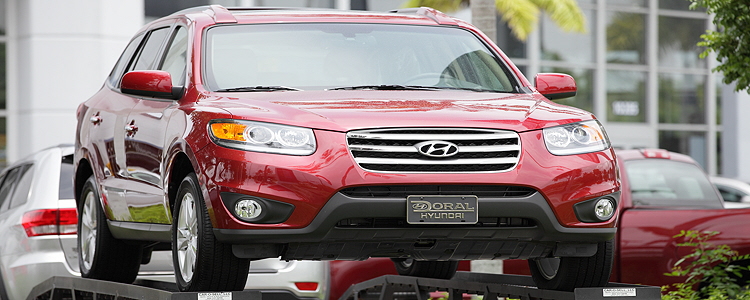Certified pre-owned (CPO) cars are sometimes called the cream of the crop of used vehicles. But like most things, you may be wondering if there’s a catch. Here’s the scoop on CPO cars and what sets them apart from your run-of-the-mill used vehicle.
What Is a CPO Vehicle?
 First, let’s go over what a CPO car is. They are used vehicles, but what separates them from a typical used car is that they're covered under a warranty and they’re inspected.
First, let’s go over what a CPO car is. They are used vehicles, but what separates them from a typical used car is that they're covered under a warranty and they’re inspected.
A CPO vehicle comes equipped with a manufacturer-backed warranty – either the factory warranty or an extended warranty. To be considered a true CPO car, it must be inspected by a manufacturer-certified mechanic and meet the manufacturer’s standards for CPO cars. These guidelines vary by automaker, but can typically be found on their respective websites.
It’s also common for off-lease vehicles to become CPOs. Oftentimes, leased cars are driven for a few years, returned, and then cleaned up and inspected to be sold as a CPO. Off-lease vehicles tend to have fewer miles and less wear and tear than your usual used car.
When you finance a CPO, it means you’re typically getting a vehicle that:
- Is in cosmetically good condition
- Is under five years old
- Has less than 60,000 miles
- Has a warranty
Again, the specific thresholds each automaker has for their own CPO cars is going to vary. Check the standards of each brand you're interested individually to get the exact details.
All of these benefits add up, and it does mean you’re likely to pay more for a CPO car than a regular used vehicle. This could be considered a “catch,” but is it?
It's hard to say that CPOs come with a catch, since they’re often a go-to option for borrowers who want to drive a newer car without the high sticker price of a brand-new one. In fact, it’s hard to find any cons of CPO vehicles, besides the fact that they lack the new car smell (but you could always buy an air freshener for that).
New Cars vs. CPO Cars
If you’re a bad credit borrower, a CPO could be a good alternative to buying a brand-new car if you still want the newer bells and whistles. New vehicles tend to lose lots of value within the first year, often between 10% to 20% within 12 months. When you finance a CPO car, that initial big drop in value, called depreciation, has already happened since the vehicle is used when you get behind the wheel.
Another bonus with a CPO over a new car is that the CPO isn’t as likely to set you in a negative equity position. New vehicles, since their value drops so quickly in the first year, tend to place their owners in negative equity early on until they can catch up.
Negative equity, also called being upside down on your loan, means that you owe more on the car than it's worth. It's common to be in this position when you finance a new vehicle. But when you finance a CPO or used car, your risk of having negative equity lessens since depreciation tends to slow over time; it never stops, but it does taper.
Dealerships and Bad Credit Lending Options
There’s always a chance of getting into a used vehicle that has underlying problems. But with a CPO car, that chance lessens even further since it's covered under a warranty and it’s been inspected before it's handed over to you.
Getting into a CPO vehicle means buying from a dealership. But, if your credit score isn’t the best, you may feel like you can’t work with a dealer. Think again and start with us at Auto Credit Express! We have a coast-to-coast network of dealerships that specialize in helping bad credit borrowers.
To start the process of getting back on the road, fill out our free auto loan request form. We’ll look for a dealer in your local area with lending options for unique credit situations.
















